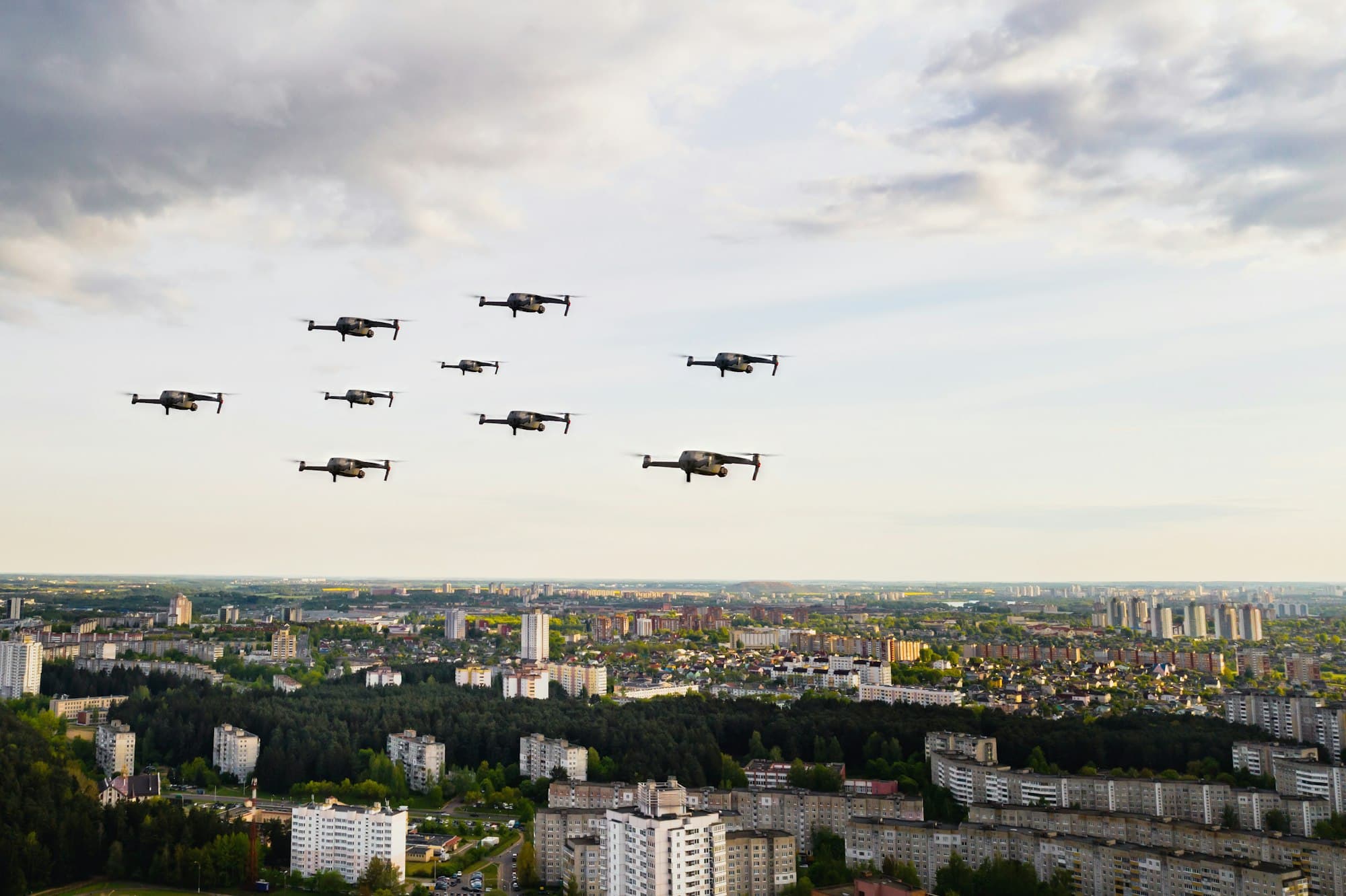The use of drones for delivery services is rapidly transforming industries across the globe. For those keen on starting a drone delivery service in the United Kingdom, understanding the necessary regulations and compliance issues is vital. This article will delve into the essentials of forming a UK-based drone delivery service and navigating the complexities of aviation safety regulations.
We’ll cover everything from selecting the right drone model to understanding the legal requirements for drone operators and remote pilots. By the end, you’ll have a solid grasp of the steps needed to launch a successful and compliant drone delivery service.
Also to see : What are the detailed steps to start a UK-based agricultural technology (AgTech) company?
Selecting the Right Drone Model for Delivery Services
Choosing the appropriate drone model is a crucial step in establishing a drone delivery service. The type of unmanned aircraft you select will impact your operations, capabilities, and compliance with civil aviation regulations.
Key Features to Consider
When selecting a flying drone for delivery, ensure it has the capacity to handle your specific delivery needs. Drones weighing more than 250 grams must comply with UK regulations, so consider the payload capacity, flight range, battery life, and durability.
Have you seen this : What specific steps are required for setting up a UK-based drone photography service?
Popular Drone Models
Several model aircraft are popular in the industry due to their reliability and advanced features. Brands like DJI, Parrot, and Autel Robotics offer models specifically designed for commercial operations. Opt for a drone with high-definition cameras and GPS to ensure precise navigation and safety.
Customization and Upgrades
Sometimes, the standard models may need customization to meet the unique requirements of your delivery service. Consider investing in upgrades such as enhanced batteries for longer flights, or improved communication systems for better control and reliability.
By selecting the right drone model, you lay a strong foundation for a successful service. Make sure your chosen model meets the needs of your business and adheres to the aviation authority’s requirements.
Understanding UK Drone Laws and Regulations
Complying with drone laws is non-negotiable for operating a drone delivery service in the UK. The Civil Aviation Authority (CAA) is the governing body overseeing these regulations. Understanding and adhering to these guidelines ensures safe and legal operations.
Key Regulations
UK drone laws categorize drones based on their weight and intended use. For commercial operations, your drone operators must adhere to specific rules. These include maintaining a direct visual sight of the drone, staying below 400 feet, and avoiding restricted areas.
Open Category and Specific Category
Drone operations fall into different categories. The open category is for low-risk operations, while higher-risk activities fall under the specific category, requiring a detailed risk assessment. The open category permits operations without prior authorization, but they must still comply with the basic safety rules.
Remote Pilot and Operator Responsibilities
The remote pilot is responsible for the drone’s safe operation during flights. They must undergo appropriate training and obtain the necessary permissions. The drone operators must ensure the drone is fit for flight, follow all regulations, and maintain flight logs.
Insurance and Liability
Commercial drone operators must have appropriate insurance coverage. This is crucial to protect against potential liabilities arising from drone operations. Ensure your insurance policy covers all aspects of your delivery service, including third-party damage and injury.
Adhering to these regulations will help you comply with the UK’s stringent safety standards, ensuring the smooth operation of your drone delivery service.
Preparing for Drone Operations and Risk Assessments
Before launching your drone delivery service, thorough preparation and risk assessment are essential. This involves planning your operations meticulously and identifying potential risks.
Creating an Operational Plan
Develop a comprehensive operational plan outlining your delivery routes, schedules, and procedures. This plan should include details on drone operations, maintenance schedules, and emergency protocols. A well-structured plan ensures consistency and efficiency in your service.
Conducting a Risk Assessment
A detailed risk assessment is critical for identifying potential hazards and implementing measures to mitigate them. Assess the risks associated with your delivery routes, weather conditions, and potential technical failures. Document these findings and update your procedures accordingly.
Training and Certification
Ensure that your team, including remote pilots and support staff, undergoes proper training. The CAA mandates specific training programs and certifications for commercial drone operators. Regular training updates and drills will keep your team proficient and ready for any situation.
Testing and Trials
Conducting test flights is an essential part of the preparation process. These trials help identify any operational issues and allow you to fine-tune your service. Ensure your tests cover different weather conditions and times of day to understand the drone’s performance in various scenarios.
By meticulously preparing and conducting thorough risk assessments, you lay a solid groundwork for safe and efficient drone operations.
Navigating the Legal Landscape with the CAA
Engaging with the Civil Aviation Authority (CAA) is an integral part of starting a drone delivery service in the UK. The CAA oversees all aspects of civil aviation, including the use of drones for commercial purposes.
Obtaining Necessary Permissions
Before launching your service, obtain the required permissions from the CAA. This typically includes an Operational Authorization, which is mandatory for commercial drone operations. The CAA may also require additional permissions based on your specific operations and the areas you intend to operate in.
Compliance with Safety Standards
Ensure that your drone model and operations comply with the CAA’s safety standards. This includes adhering to airspace restrictions, maintaining safe distances from people and property, and conducting regular maintenance checks. Compliance is not only a legal requirement but also a critical factor in ensuring the safety and reliability of your service.
Regular Audits and Reporting
The CAA may conduct audits and inspections to ensure ongoing compliance with regulations. Be prepared to provide documentation such as flight logs, maintenance records, and proof of training. Regular internal audits can help you stay compliant and identify areas for improvement.
Staying Updated with Regulations
Drone laws and regulations are continually evolving. Stay informed about any changes in the legal landscape by regularly checking the CAA’s website and subscribing to industry newsletters. Being proactive in understanding and adapting to new regulations will keep your service compliant and competitive.
Navigating the legal landscape with the CAA can be complex, but it is an essential step in ensuring the legality and safety of your drone delivery service.
Implementing Efficient and Safe Drone Delivery Operations
Once you have navigated the regulatory landscape and prepared your team, the next step is to implement your drone delivery operations efficiently and safely.
Setting Up Your Delivery Network
Establish a robust delivery network with strategically located hubs to optimize your operations. Consider the geographical regions you will cover, the types of packages you will deliver, and the specific needs of your customers. An efficient network minimizes delivery times and maximizes customer satisfaction.
Integrating Technology and Automation
Leverage technology to streamline your operations. Use advanced software for route planning, package tracking, and real-time monitoring of your drones. Automation can help in managing repetitive tasks, allowing your team to focus on strategic aspects of the service.
Ensuring Safety and Compliance
Safety is paramount in drone delivery operations. Regularly inspect and maintain your drones to ensure they are in optimal condition. Implement strict safety protocols and ensure all team members are well-versed in emergency procedures. Compliance with aviation authority regulations must be a continuous priority.
Customer Engagement and Feedback
Engage with your customers by providing real-time updates on their deliveries. Use feedback to improve your service continually. Transparency and communication build trust and enhance the customer experience.
Monitoring and Optimization
Continuously monitor your operations to identify areas for improvement. Use data analytics to optimize routes, reduce operational costs, and enhance service efficiency. Regularly review your processes and implement changes to stay ahead in the competitive market.
Implementing efficient and safe drone delivery operations requires a combination of technology, strategic planning, and a commitment to safety and compliance.
Launching a UK-based drone delivery service involves a multi-faceted approach encompassing the selection of the right drone model, understanding and adhering to drone laws, preparing for operations with thorough risk assessments, and navigating the legal landscape with the aviation authority (CAA). By meticulously planning and implementing these steps, you can establish a drone delivery service that is not only efficient and reliable but also compliant with the UK’s stringent safety regulations.
As you embark on this journey, remember that continuous improvement, customer engagement, and adherence to safety protocols are key to sustaining and growing your service. With the right approach, your drone delivery service can revolutionize how goods are transported, offering convenience and efficiency to your customers while complying with all necessary regulations.
By following this comprehensive guide, you are well-equipped to form a drone delivery service in the UK and navigate the complexities of aviation safety regulations effectively.






